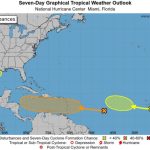Reuters: Fitch affirms Dominican Republic’s IDRs at ‘B+’; outlook stable

Reuters: (The following statement was released by the rating agency) NEW YORK, May 29 (Fitch) Fitch Ratings affirmed the Dominican Republic’s long-term foreign and local currency Issuer Default Ratings (IDRs) at ‘B+’. The issue ratings on the Dominican Republic’s senior unsecured foreign and local currency bonds are also affirmed at ‘B+’. The Rating Outlooks on the long-term IDRs are Stable. The Country Ceiling is affirmed at ‘BB-‘ and the Short-term foreign currency IDR at ‘B’.
KEY RATING DRIVERS T
he Dominican Republic’s ratings are underpinned by its higher per capita income and more diversified economic structure than peers. The country has a record of resilient growth and macroeconomic stability and benefits from diverse external financing sources.
These credit strengths are balanced by the vulnerability of the country’s external balance sheet due to its relatively high external financing needs, large exposure of sovereign debt to currency risks, and low international reserves in the context of limited exchange rate flexibility. A narrow revenue base, budgetary rigidities and election-related spending have affected fiscal policy predictability and increased the public debt burden.
The Stable Outlook factors in the positive impact from lower international oil prices on the country’s burdensome fuel imports and electricity subsidies in addition to the boost to trade, investment, remittances and tourism inflows from the recovery in the U.S.
These tailwinds are likely to support economic growth, external accounts and public finances in 2015-2016. However, higher interest rates in the U.S. could increase borrowing costs and currency volatility. Moreover, the uncertainty surrounding the length and competitiveness of the upcoming electoral campaign poses risks to the fiscal accounts.
The Dominican Republic has demonstrated resilience through adverse domestic and external cycles. The country’s five-year average growth reached 5.2% in 2014, well above the ‘B’ median of 4.4%, driven by robust private consumption, investment in public infrastructure, mining and tourism exports. In the absence of productivity-enhancing reforms, Fitch expects economic activity will remain robust decelerating to 4.9% in 2015-2016. Cyclical and structural factors are improving the Dominican Republic’s balance of payments.
The current account deficit (CAD) will continue narrowing to 2.5% of GDP on average in 2015-2016, driven chiefly by low near-term oil prices and strengthening current account receipts (CXR). Fitch forecasts that an improved external amortization schedule coupled with the lower CAD could reduce the Dominican Republic’s gross external financing needs to 92% of international reserves in 2015-2016, albeit higher than the ‘B’ median, 75%.
However, the country’s external balance sheet remains vulnerable. International reserve coverage has increased in recent years but, at 2.4 months of current external payments in 2014, provides limited buffer against external shocks in the context of an actively managed exchange rate regime. Moreover, net external debt as well as amortization and interest payments, 63% and 16% of CXR in 2014, are higher than the respective ‘B’ medians.
Fiscal consolidation is proceeding in line with government targets. The general government deficit fell to 2.8% of GDP in 2013-2014 from the unprecedented 6.4% in the 2012 electoral year through tax reform and cuts to capital investment. Under Fitch’s base case, the general government deficits will moderate to 2.5% of GDP in 2015 driven by lower energy subsidies and increase to 3.4% in the run-up to the general elections in May 2016.
Fitch expects the general government to achieve a small 0.2% of GDP primary surplus in 2015, with public debt coming down moderately to around 35% of GDP, below the ‘B’ median of 50%, due to the recent liability management operation that redeemed PetroCaribe debt.
The government’s financing flexibility has increased with international capital market and multilateral access and steady development of local capital markets. However, the 73% foreign currency-denomination of public debt and non-resident participation in the local debt market expose the sovereign to foreign exchange (FX) and capital market volatility risks.
Inflation is likely to remain subdued near 3% for end-2015, lower than the official 4.0%+/-1% target, reflecting low oil import prices, exchange rate stability and slower domestic demand. While transitioning toward an inflation-targeting monetary regime, monetary policy flexibility remains constrained by quasi-fiscal losses, rapid pass-through of imported costs, and financial dollarization.
The 2016 election cycle could slow progress on the reform agenda, particularly as a constitutional amendment to permit consecutive presidential terms takes political precedence in 2015. While the authorities honored the legal mandate to raise funding for education and increased investment in power generation, progress on adjusting tariffs and tackling theft in the electricity sector, and a fiscal pact will be difficult before the elections.
RATING SENSITIVITIES
The Stable Outlook reflects Fitch’s assessment that upside and downside risks to the rating are currently balanced. The main factors that individually, or collectively, could trigger a rating action are: Positive: –Strong growth and investment performance relative to peers without increasing macroeconomic imbalances; –Fiscal restraint through the electoral cycle; –Reduction of external vulnerabilities; Negative: —
Fiscal slippage and growth underperformance leading to deteriorating debt dynamics; –Erosion of foreign reserves and increased macroeconomic instability; –Emergence of financing constraints.
KEY ASSUMPTIONS
The ratings and Outlooks are sensitive to a number of assumptions: –Fitch forecasts that average U.S. growth of 2.9% in 2015-2016 will support the Dominican Republic’s economic growth and external accounts, given the strong trade and financial linkages between the two countries. –
The Dominican Republic’s fiscal and external forecasts assume that annual gold production is sustained at 1 million ounces and international prices average USD1200 per ounce in 2015-2016, benefiting exports and mining royalties.
Fitch’s latest projections also factor in adjustment of the average Brent oil price to USD65 per barrel in 2015 and USD75 in 2016, resulting in reductions in the country’s fuel import bill and electricity transfers. –Fitch assumes that the normalization of monetary policy rates in the U.S. proceeds in an orderly manner and there are no large capital outflows or external market financing constraints for the Dominican Republic in 2015-2016.
















